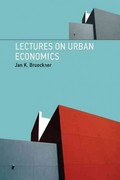Question
Only one firm produces and sells soccer balls in the country of Wiknam, and as the story begins, international trade in soccer balls is prohibited.
Only one firm produces and sells soccer balls in the country of Wiknam, and as the story begins, international trade in soccer balls is prohibited. The following equations describe the monopolist's demand, marginal revenue, total cost, and marginal cost:
Demand: P = 10 - Q
Marginal Revenue: MR= 10 - 2Q
Total Cost: TC= 3 + Q + 0.5Q2
Marginal Cost: MC = 1 + Q
Where Q is quantity and P is price measured in Wiknam dollars.
a. How many soccer balls does the monopolist produce? At what price they are sold? What is the monopolist profit?b. Now assume that free trade is permitted in Wiknam, so soccer balls can be exported or imported. Note that by entering the world market, the firm is now a price taker, (no longer a monopoly). If the World Price = $6, what happens to domestic production? What happens to domestic consumption? Does Wiknam export or import soccer balls? How many?c. In Chapter 9, analysis of international trade, a country becomes an exporter when the price without trade is below the world price and an importer when the price without trade is above the world price. Does that conclusion hold based on your answer to parts a) and b) above? Explaind. Suppose that the world price is not $6 but instead happened to be exactly the same as domestic price without trade as determined in part a). Now if the country allow trade, would it change anything in the Wiknamian economy? Explain and compare it with the analysis in chapter 9.
Step by Step Solution
There are 3 Steps involved in it
Step: 1

Get Instant Access to Expert-Tailored Solutions
See step-by-step solutions with expert insights and AI powered tools for academic success
Step: 2

Step: 3

Ace Your Homework with AI
Get the answers you need in no time with our AI-driven, step-by-step assistance
Get Started


